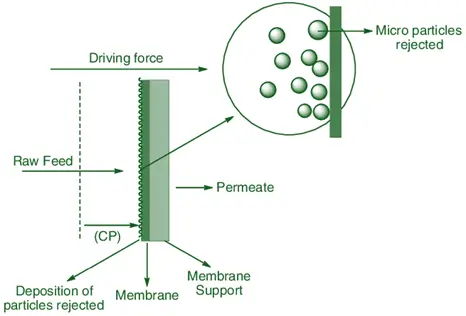Principle of Membrane Filters
- Membrane filters operate on the principle of selective permeability, allowing certain molecules or particles to pass through while retaining others.
- They use a thin, semi-permeable membrane for filtration.
Construction of Membrane Filters

Advertisements
- Membrane: Made from materials like cellulose acetate, polyamide, or polysulfone.
- Support Structure: Holds the membrane in place and provides structural integrity.
- Filter Housing: Contains the membrane and provides connections for fluid flow.
- Inlet/Outlet Ports: For fluid entry and exit.
Working
- The fluid is forced through the membrane under pressure.
- Smaller molecules and particles pass through the membrane, while larger ones are retained.
- The permeate (filtered fluid) exits through the outlet port, and the retentate (retained particles) is collected or discarded.
Advertisements
Uses
- Water purification
- Pharmaceutical manufacturing
- Food and beverage industry
- Medical applications (e.g., dialysis)
Merits
- High precision filtration with consistent pore sizes.
- Can achieve very fine filtration (microfiltration, ultrafiltration, nanofiltration).
- Relatively low energy consumption.
- Suitable for a wide range of applications.
Advertisements
Demerits
- Membranes can be prone to fouling.
- High initial cost for certain types of membranes.
- Requires pre-treatment of fluids in some cases.

